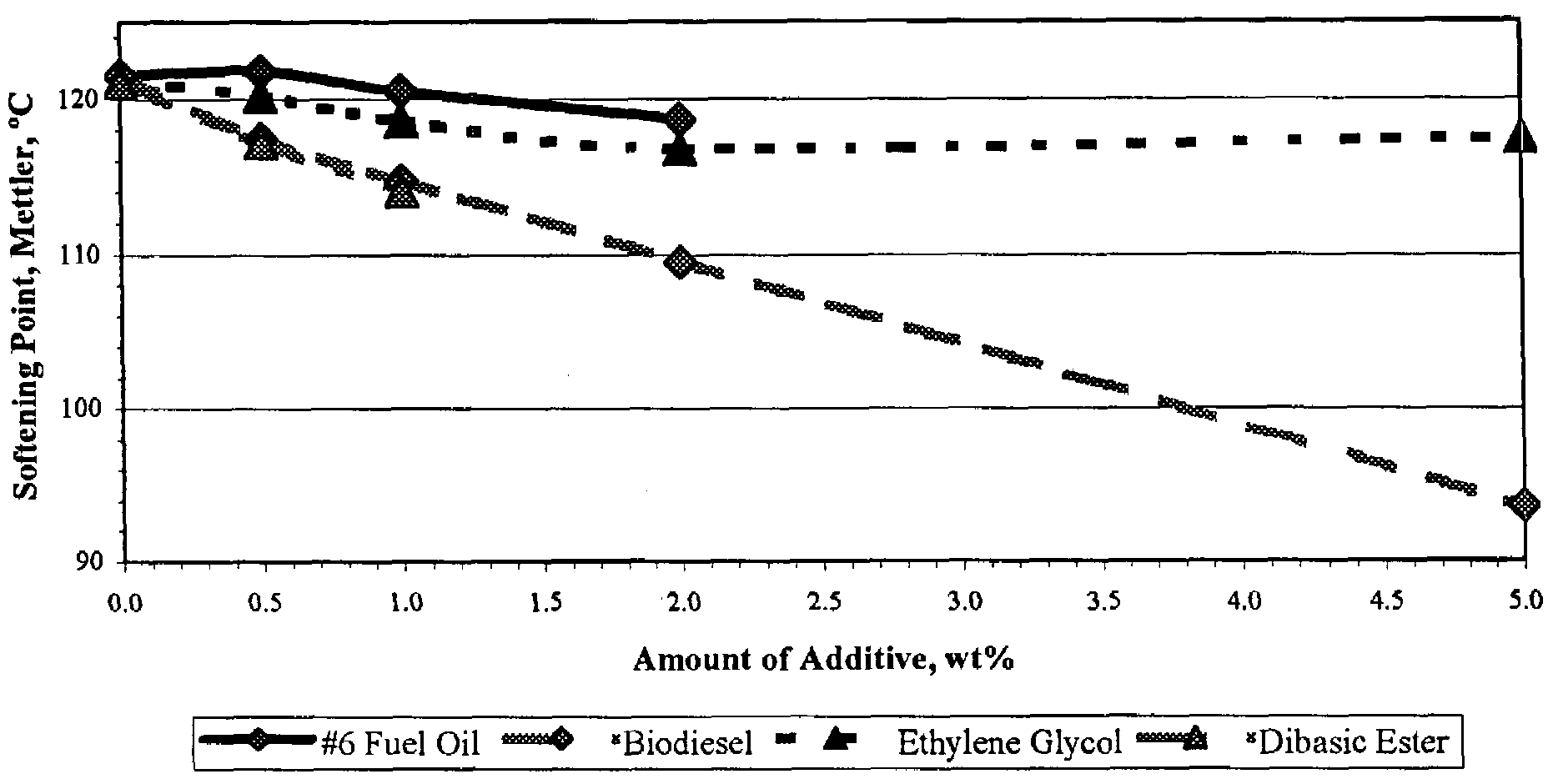Viscosity modification of heavy hydrocarbons
a hydrocarbon and viscosity technology, applied in the field of oxygenated compounds, to achieve the effect of high softening point, low viscosity and high softening poin
- Summary
- Abstract
- Description
- Claims
- Application Information
AI Technical Summary
Benefits of technology
Problems solved by technology
Method used
Image
Examples
example i
[0052]The ability of biodiesel compounds to desirably reduce the softening point of A-240 petroleum pitch compared to No. 6 fuel oil, and diabasic esters and ethylene glycol is shown in FIG. 1.
example ii
[0053]Only a small amount of methyl esters / biodiesel is needed to affect a desired change in softening point. The softening point of a 120° C. softening point pitch is reduced without causing a major change in the coking value of the final product. A comparison of the softening point / coking value relationship of standard petroleum products versus blends of petroleum pitch and biodiesel compounds is shown in FIG. 2.
example iii
[0054]The ability of biodiesels to reduce the softening point of heavy hydrocarbons is demonstrated not only with various grades of petroleum pitch but with asphalt cement type petroleum products and coal derived heavy hydrocarbons as well. FIG. 3 shows a comparison between blends of the following hydrocarbons and biodiesel: A-240 petroleum pitch, A-225 petroleum pitch, coal tar pitch and SDA bottoms (solvent deasphalt bottoms).
PUM
| Property | Measurement | Unit |
|---|---|---|
| softening point | aaaaa | aaaaa |
| softening point | aaaaa | aaaaa |
| wt % | aaaaa | aaaaa |
Abstract
Description
Claims
Application Information
 Login to View More
Login to View More - R&D
- Intellectual Property
- Life Sciences
- Materials
- Tech Scout
- Unparalleled Data Quality
- Higher Quality Content
- 60% Fewer Hallucinations
Browse by: Latest US Patents, China's latest patents, Technical Efficacy Thesaurus, Application Domain, Technology Topic, Popular Technical Reports.
© 2025 PatSnap. All rights reserved.Legal|Privacy policy|Modern Slavery Act Transparency Statement|Sitemap|About US| Contact US: help@patsnap.com



